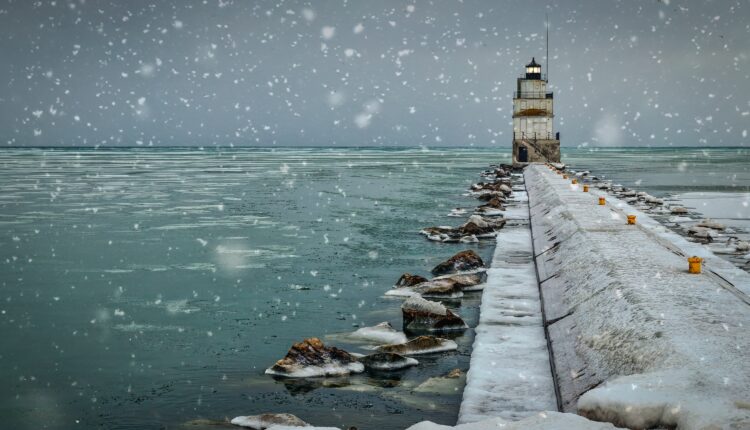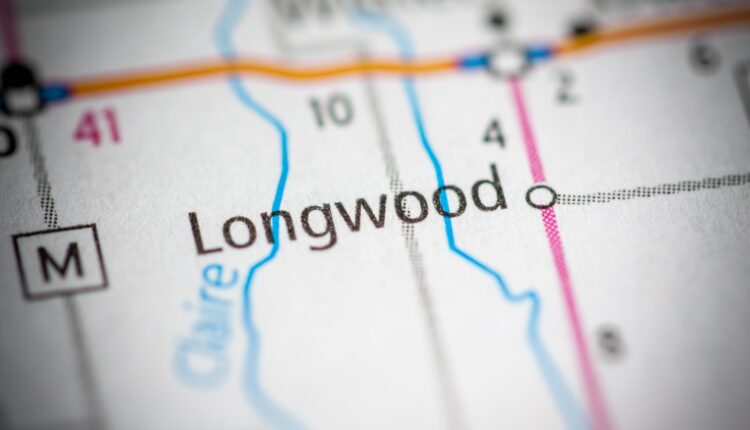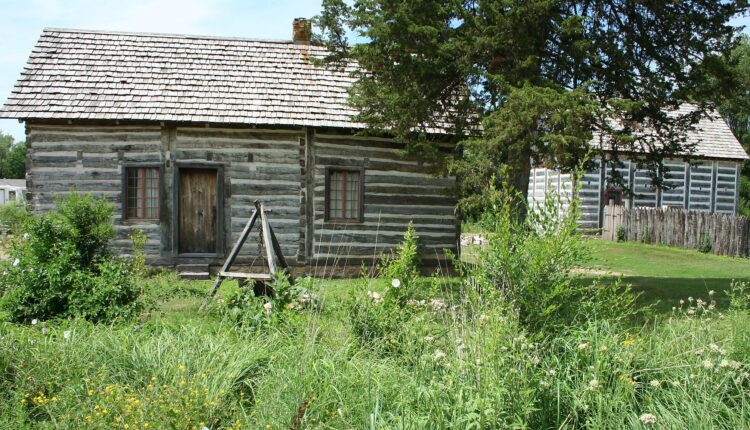
Photo courtesy of Shutterstuck.
Here’s how the Great Lakes bring Wisconsin swaths of snow every single winter (and which Wisconsin areas receive the most). It’s called the lake effect.
Anyone from Chicago, Marquette, or Green Bay can attest that the lake effect in the Midwest is not only real, but a major player in the area’s weather patterns. In fact, some parts of our very own Wisconsin get up to 150 inches of snow year after year thanks to this fascinating phenomenon. But what exactly is the lake effect? Let’s get into it.
What is the lake effect?
The lake effect brings snow flurries galore to the states that border the Great Lakes, but it’s important to note that this phenomenon isn’t exclusive to the Midwest. Folks in Salt Lake City, Utah, and in coastal towns along the Baltic Sea can experience the same lake-effect weather patterns. That said, the phrase is certainly a popular one in Wisconsin and other Great Lakes border states, and for good reason.
Now, you may be wondering how a lake equals snow in this phenomenon. According to the National Weather Service, it all comes down to a central lesson from grade school: Hot air rises. In this case, when cooler air travels south (typically from Canada in this case) and sweeps across the Great Lakes, it mingles with the lakes’ warmer air, which is rising off of the water’s surface. Together, the two streams of air create clouds—differing temperatures of air meeting is a big reason why tornadoes form, too—and because moisture from the lakes is also trapped in the warm air, the clouds are full of precipitation by the time they reach land. Et voila—snowfall hits Wisconsin’s coastal cities and towns en masse thanks to the huge clouds formed by Lake Superior and Lake Michigan.
Where does the lake effect happen in Wisconsin?
When looking at which areas of Wisconsin experience lake effect, we have to look at those that border Lakes Michigan and Superior, though not every area that does benefits from the lake effect. For example, Milwaukee sits on Lake Michigan, but it doesn’t experience the lake effect like other areas in Wisconsin do.
Instead, let’s turn our sights further north. Situated near the top tip of the state, Hurley can see up to 200 inches of snow settle on its land each and every year thanks to the lake effect. This is more than any other area in the state, but it’s not the only locale to benefit from the lake effect. Other Wisconsin towns and cities that receive heavy snowfall in the fall and winter because of the lake effect include Upson, Saxon, Bayfield, Madeline Island, and Ephraim.
How much snow have these areas gotten in the past?
We know that Hurley averages between 150 and 200 inches of snow every year, but what do the other aforementioned cities experience? Saxon and Upson both average over 90 inches of snow each year, while Bayfield comes in around 76 inches per year. Madeline Island’s snow averages in the low 70s, and Ephraim hangs around 50 inches per year. While these aren’t Hurley-level numbers, not many cities’ snowfall averages are, and these certainly aren’t anything to scoff at.
Now, you may be wondering if there have been times when the lake effect has blown these averages out of the water, and you’d be correct. Some years are heavier hitters than others, almost as though Lake Michigan and Lake Superior are blowing cold kisses along Wisconsin’s coasts. Take Bayfield. This town averages considerably less than 100 inches of snow per year, yet it’s seen huge spikes in its snowfall record thanks to the lake effect. According to the National Weather Service, Bayfield received 182 inches of snow in the winter of 2022-2023, the most in its recorded history. Other notable seasons here include the 2013-2014 winter and the 1996-1997 winter, which both saw the area granted 150 inches of snow.
These spikes in snowfall appear across the board. Hurley, which is already a winter wonderland, saw its annual snowfall average skyrocket in 1997, when 302 inches rained down on the city, according to Iron County Economic Development (via the Wausau Daily Herald). Likewise, Upson has set records for receiving more snow in a 24-hour period in the month of January than anywhere else in the state, accumulating 25 inches on January 3, 1999, per the Wisconsin State Climatology Office. Upson also holds the March record (26 inches), while Bayfield has April (24 inches) and December (25 inches) locked down. Even Saxon has gotten in on the fun, holding September’s single-day record of 6 inches. (What a relief that must have been!)
Is lake effect required to experience heavy snowfall?
Thankfully—at least if you’re someone who enjoys the snow—no. Plenty of Wisconsin’s towns and cities receive generous snowfalls without bordering either of the Dairy State’s Great Lakes. Take Argonne or Eagle River. These areas are considerably inland, but they both average more than 70 inches of snow per winter. The same applies to areas like Jump River and Rhinelander, which come in closer to exactly 70 inches per year. The common denominator? All of these areas are among the ones that experience the most snow in Wisconsin, with these averages often being blown out of the water. For instance, in the 2018-2019 winter season, Rhinelander got 115 inches of snow (via the National Weather Service).
All of this simply means that, whether you want to chase the snow or you want to leave it behind, you can’t only base your travel or relocation plans on whether a city is by a lake. One thing about our state forever rings true: Wisconsin weather will keep you on your toes.
This article first appeared on Good Info News Wire and is republished here under a Creative Commons license.

12 things you never knew about Wisconsin’s ginseng trade
Wisconsin’s ginseng trade dates back more than a century and contributes millions of dollars to the state’s economy. Discover what makes Wisconsin...

Why Wisconsin’s shipwrecks are disappearing
The Great Lakes’ frigid fresh water used to keep shipwrecks so well preserved that divers could see dishes in the cupboards. Today, an invasive...

11 Wisconsin town names that will make you blush
Have you ever driven past a Wisconsin town and chuckled at its risqué name? The state has several that are blush-worthy, with unique backstories...

10 buildings in Wisconsin that are older than the state itself
Cabins, homes, military compounds, and outhouses, oh my! The oldest buildings in Wisconsin date back to the 1700s and run the entire utility gamut....




